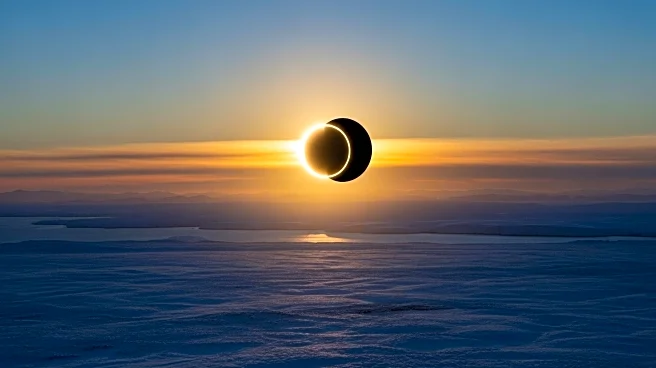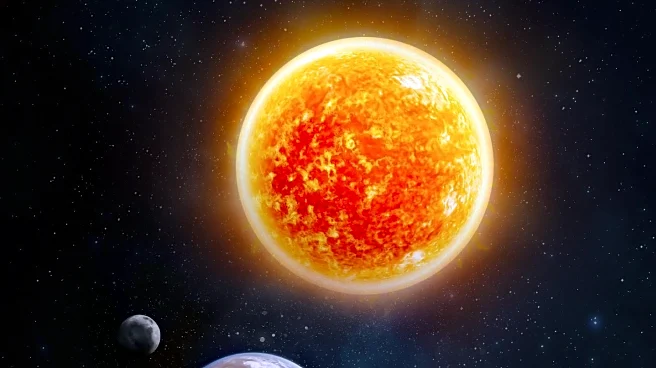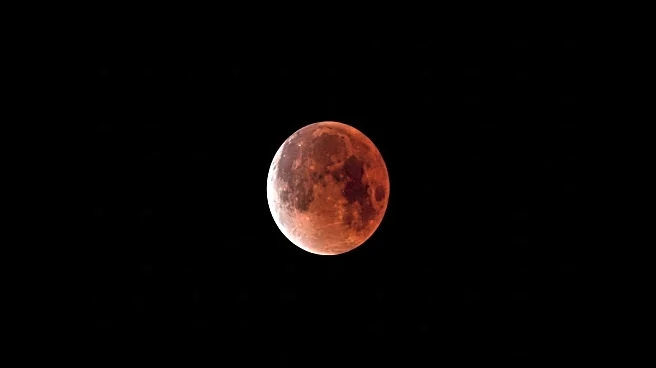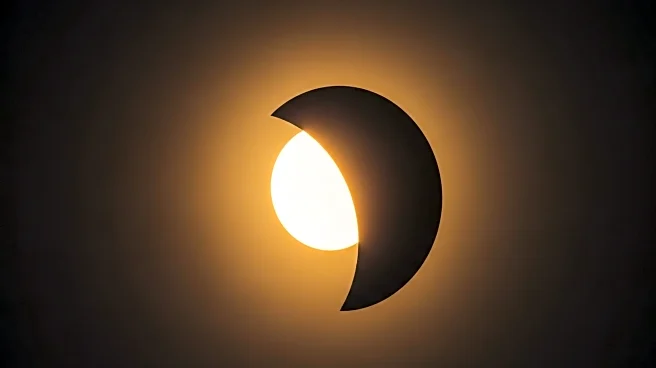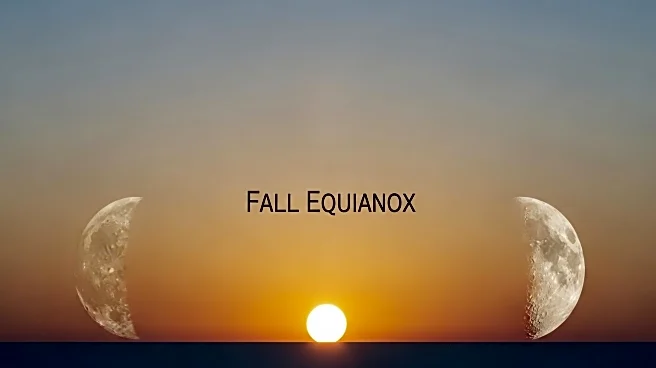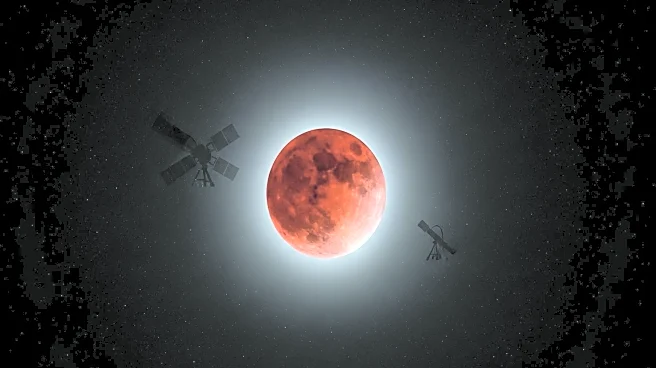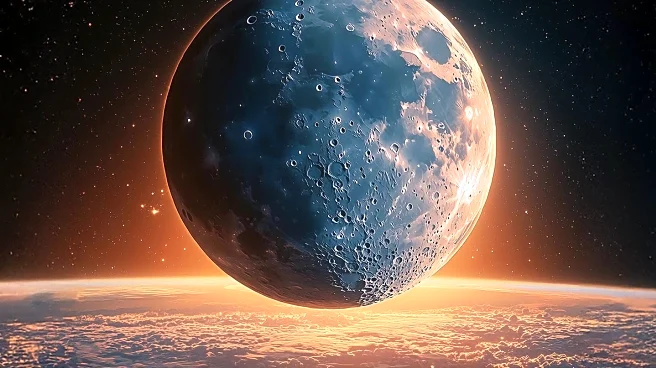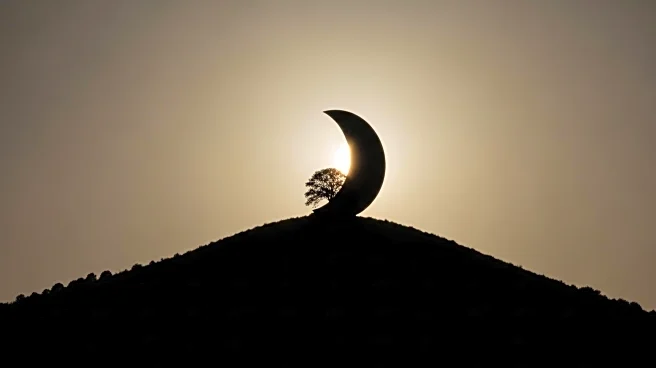What's Happening?
The final solar eclipse of 2025 is set to occur on September 21, featuring a partial eclipse visible primarily in the Southern Hemisphere. This celestial event will be observable in regions such as Australia, Antarctica, the Pacific Ocean, and the Atlantic Ocean. The eclipse will not be visible in India or across most of Asia, Africa, and the Americas. The partial eclipse occurs when the Moon passes between the Earth and the Sun, covering only a portion of the solar disc. According to Space.com, the eclipse will begin at 1:29 PM EDT, peak at 3:41 PM EDT, and end at 5:53 PM EDT. During the peak, a significant portion of the Sun will be covered by the Moon, offering a dramatic visual for those in the visibility zone.
Why It's Important?
Solar eclipses are significant astronomical events that attract global attention from scientists and enthusiasts alike. This partial eclipse provides an opportunity for skywatchers in the Southern Hemisphere to witness a rare celestial phenomenon. While the eclipse is not visible in India, it highlights the importance of understanding astronomical events and their cultural significance. The event also underscores the need for proper safety measures, as looking directly at the Sun during an eclipse can cause permanent eye damage. Protective eyewear is essential throughout the event to ensure safe viewing.
What's Next?
The next solar eclipse is scheduled for February 17, 2026, which will be an annular eclipse visible from Antarctica, with partial visibility in Africa, South America, the Pacific Ocean, the Atlantic Ocean, and the Indian Ocean. Later in August 2026, a total solar eclipse will occur, offering an even more dramatic spectacle. These upcoming events will continue to engage the global community in astronomical observation and research.

